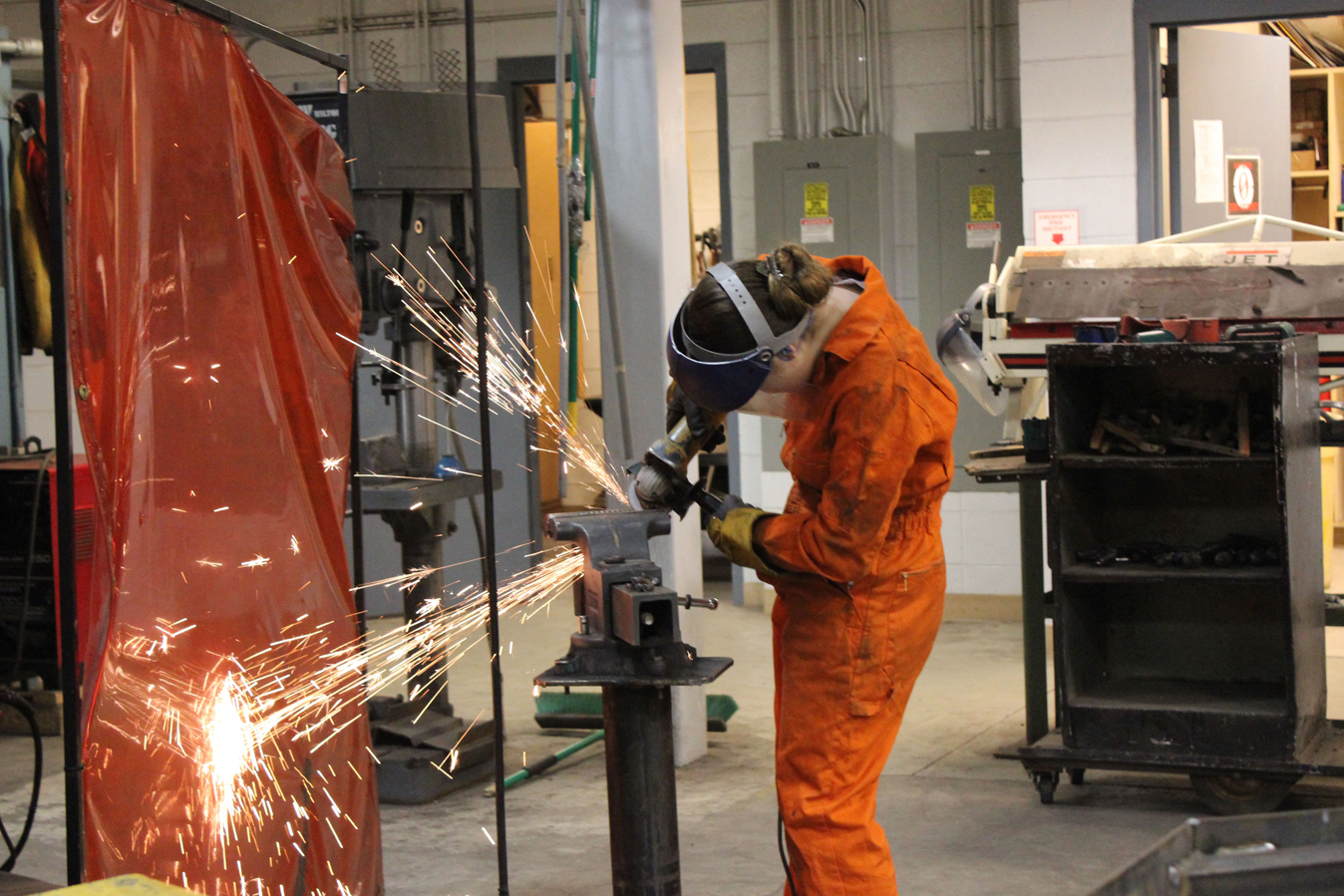For six weeks before the holiday break, 15 girls from Voznesenka, Kachemak Selo and Razdolna schools set sparks flying.
From 4-9 p.m., two days a week for a total of 60 hours, they hid their beautiful long dresses beneath unbecoming, but protective ensembles of coveralls, leather jackets, gloves and helmets to learn the art of welding from Homer High School instructor Mickey Todd.
Officially known as the After-School Welding Academy, it was sponsored through the Kenai Peninsula Borough School District’s Career and Technical Education programs.
“I had a tremendous amount of fun teaching the academy,” said Todd. “I learn something new every time I step into the shop, and with the all-girls academy, it was so much fun introducing a career opportunity to young females that they may never have thought of.”
What Todd discovered through the academy, as well as from girls that enroll in his welding class at Homer High, is that girls “do extremely well in the welding field. They are very patient, persistent and focused. Welders can make a tremendous living in this lucrative trade and offering an opportunity for the girls to experience what welding is all about was such a privilege.”
With the music cranked up in the shop-turned-classroom, the girls were focused on their work. Talking was at a minimum, except to ask where this tool was, where that piece of equipment could be found or for advice from Todd. Elizavetha Reutov gave a brief smile, quickly looking up from her work creating a decorative moose. Eulita Basargin was strictly eyes-on-the-task, as she grinded away rough edges, sending a shower of sparks flying in all directions.
There was a strong push in the United States for women to become welders during World War II. As men enlisted in the war effort, the U.S. work force took a hit and women were urged to fill the gap.
“If you’ve used an electric mixer in your kitchen, you can learn to run a drill press,” was the American War Manpower Campaign’s way of developing female interest in traditionally male-dominated professions.
The bandana-ed, strong-armed image of Rosie the Riveter emerged as a popular motivating image.
In 2013, there were approximately 1,410 welding workers in the state of Alaska, according to the most recent statistics provided by Beth Leschper of the Alaska Department of Labor. About 2 percent of those workers were women.
“The goal of the class was to open up the welding shop to what is known as a non-traditional career opportunity for females,” said Todd.
“I coach girls soccer both at the junior high and high school, so I thought it would be a lot of fun to try an all-female class in the welding shop and the district thought it would be a great opportunity.”
A similar opportunity was offered during the 2013-2014 school year when Camron Wyatt taught an all-female construction academy.
“It was a huge hit,” said Todd. “The girls are so interested and keen on what is completely new and foreign to them that it makes for a challenging task.”
Following a curriculum designed by AVTEC, Alaska Institute of Technology, in Seward and aligning course content with KPBSD’s welding and materials classes that Todd teaches at HHS, the first and foremost lesson was in shop safety.
“This was an eye-opener as we started out due to the long flowing dresses the girls wear and their little experience with equipment and welding,” said Todd.
“But as I learned, the girls are very adaptable and they just tied their dresses in a knot and threw the coveralls on we use in our classes over the tops of their dresses. It worked great.”
With that resolved, lessons proceeded in the basic principles of operation and use of oxy-acetylene torches, followed by SMAW, shielded metal arc welding, also known as stick welding. They became familiar with different types of welding rods, and many moved on to GMAW, gas metal arc welding.
“The girls did small projects through their development on their technique and basic understanding of what fusing two pieces of metal actually looked like,” said Todd.
“At the end, they needed to research metal art online and then design and build a metal art project using the several styles they were taught and the scrap metal we had around the shop.”
The shop’s new plasma table made it possible for the students also to cut out holiday-themed pieces, such as snowmen, candy canes and snowflakes.
“The girls are very creative and they designed some very cool and artistic projects,” said Todd.
While this class was offered to girls from schools at the head of Kachemak Bay, most HHS students have an opportunity to participate in the CTE welding program during school hours. Three different after-school academies are offered: welding, construction and small engine technology. Todd has taught the welding academy for the past four years, but this was the first time an all-girls academy was offered. He anticipates it will be offered on an every-other-year cycle.
“The boys also love the welding academy, so I need to make sure we offer both an opportunity to the academy,” said Todd.
McKibben Jackinsky can be reached at mckibben.jackinsky@homernews.com.


